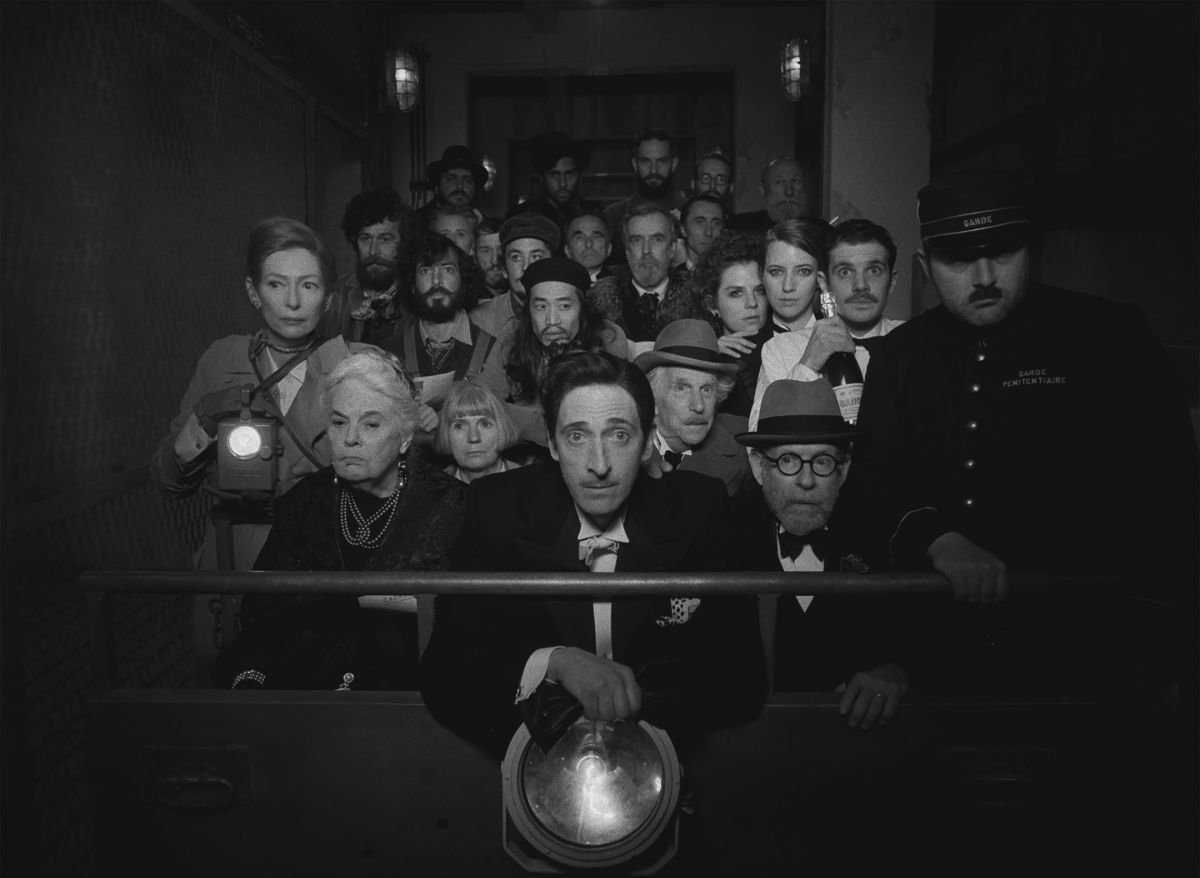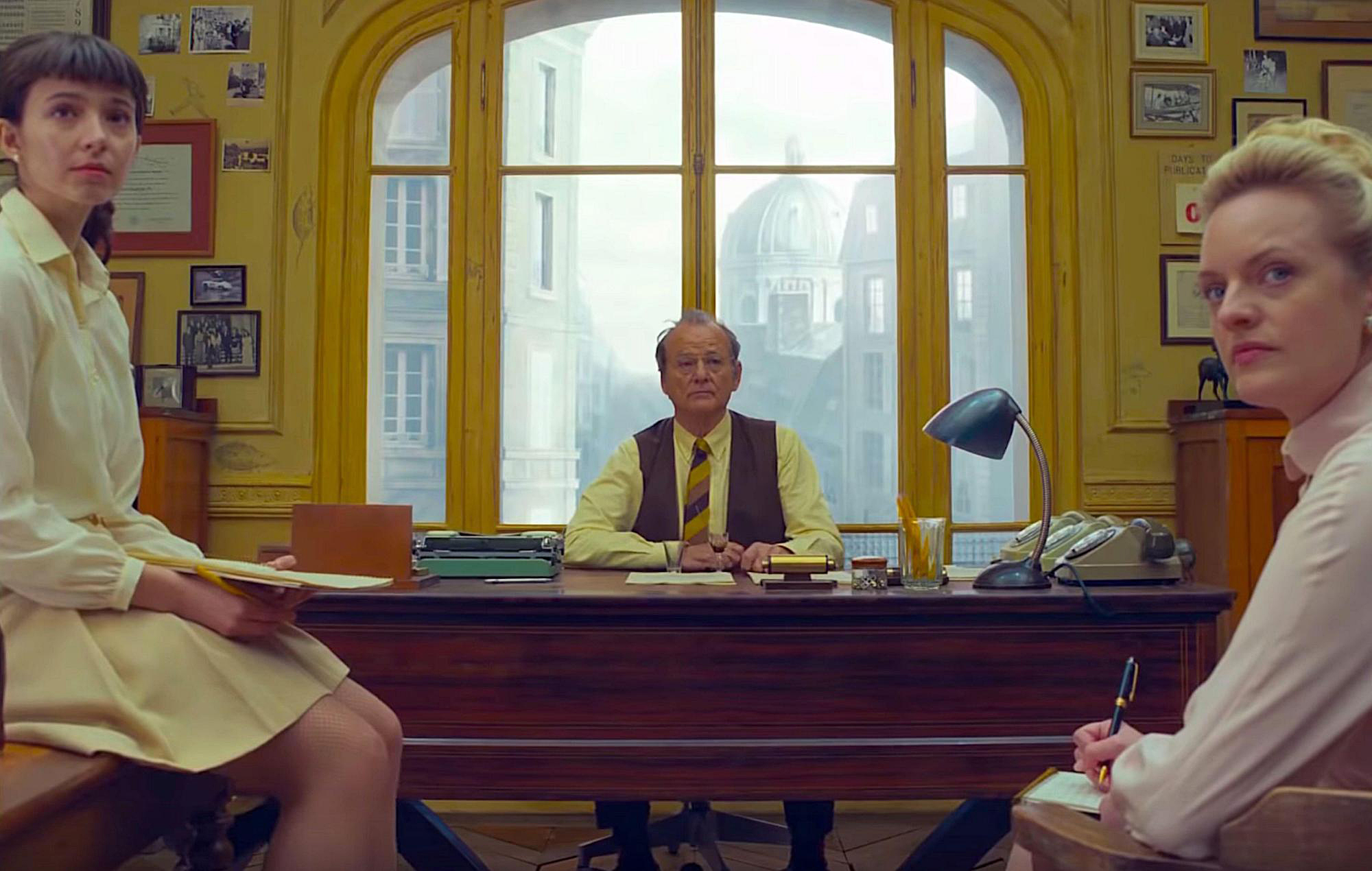
The French Dispatch: La Vie Littéraire
ASC member Robert Yeoman reteams with director Wes Anderson for this whimsical exploration of literary life.
Unit photography by Roger Do Minh. Courtesy of Fox Searchlight Pictures.
The eighth collaboration between director Wes Anderson and cinematographer Robert Yeoman, ASC, The French Dispatch is the latest step in a creative evolution that began in 1996 with the feature Bottle Rocket. The teaming yields increasingly ambitious results with each new outing, and their latest is presented as a series of magazine articles from the titular publication, brought to life onscreen.
The story begins with the death of the fictional magazine’s editor, Arthur Howitzer Jr. (Bill Murray), whose passing inspires recollections of highlights from Dispatch history. These include the tale of an imprisoned, brilliant, and possibly insane painter (Benicio Del Toro) whose muse is one of his prison guards (Léa Seydoux); a lively account of a student revolt in Paris; and a kidnapping adventure involving the French police and their renowned institutional chef.
The array of stories enabled Yeoman to employ a variety of stylistic techniques — including moving between color and black-and-white and transitioning from one aspect ratio to another — while retaining the symmetrical, deep-focus compositions Anderson has always favored.
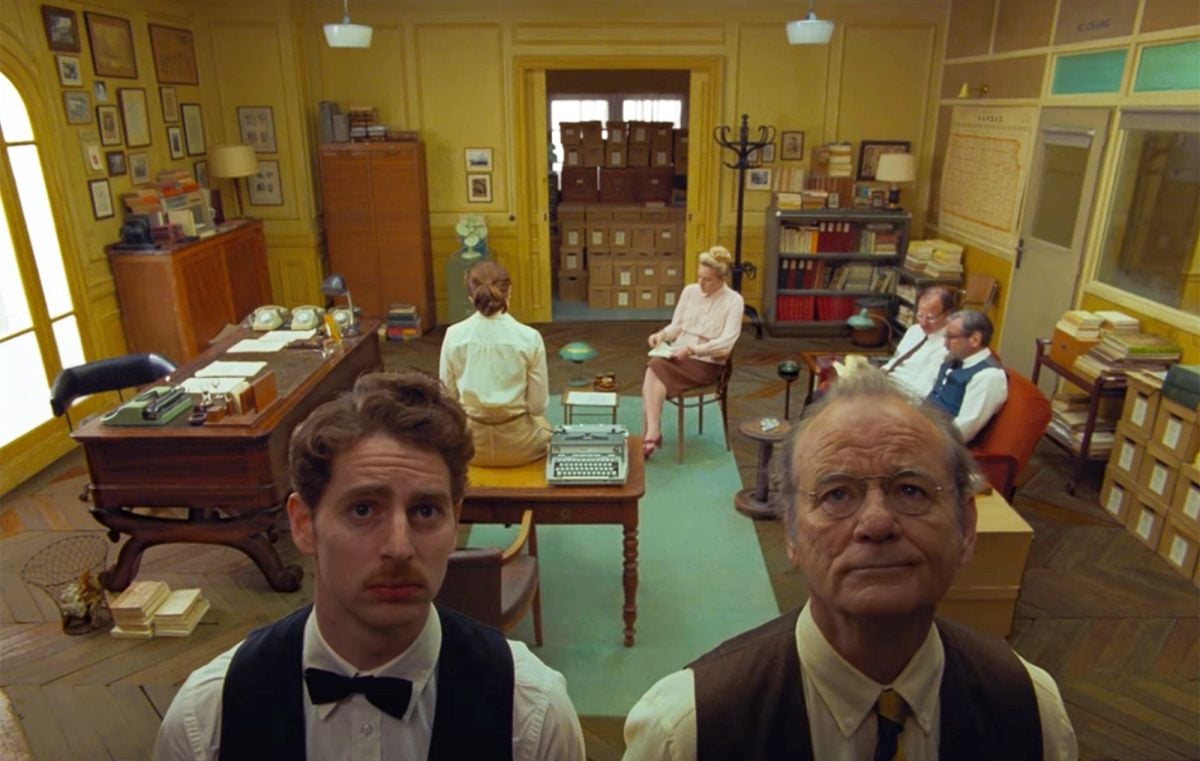
The cinematographer’s prep for The French Dispatch began the way it usually does with Anderson: the director sent him the script, a list of the actors who would star, and a detailed animatic. “It’s really beneficial to me to know which actors are playing which parts,” says Yeoman. “Wes’ animatic is kind of a cartoon version of the film, and it’s pretty intricate. He does all the voices, and you get an idea about the locations, the camera moves, and so on. Once I have that, we have Zoom conversations and exchange emails about the look and ideas and references, which gets the ball rolling.”
“I think a lot of the magic of filmmaking has been lost since we entered the digital world, and that magical quality appeals to me. The magic of cinema is very important to me.”
— Robert Yeoman, ASC

Perhaps not surprisingly, many of the references for The French Dispatch were from French cinema, specifically the French New Wave, which has held special meaning for Anderson and Yeoman throughout their creative partnership. Raoul Coutard’s cinematography in films by Jean-Luc Godard and François Truffaut was particularly relevant, says Yeoman. “[On every movie,] Wes sets up a library of DVDs and Blu-rays that cast and crew can check out, and we watch a lot of them and discuss them,” he says. “After a while, it enters your subconscious. At one point Wes and I were talking about lighting a particular scene, and I said, ‘Vivre Sa Vie,’ and he replied, ‘Yes, exactly.’”
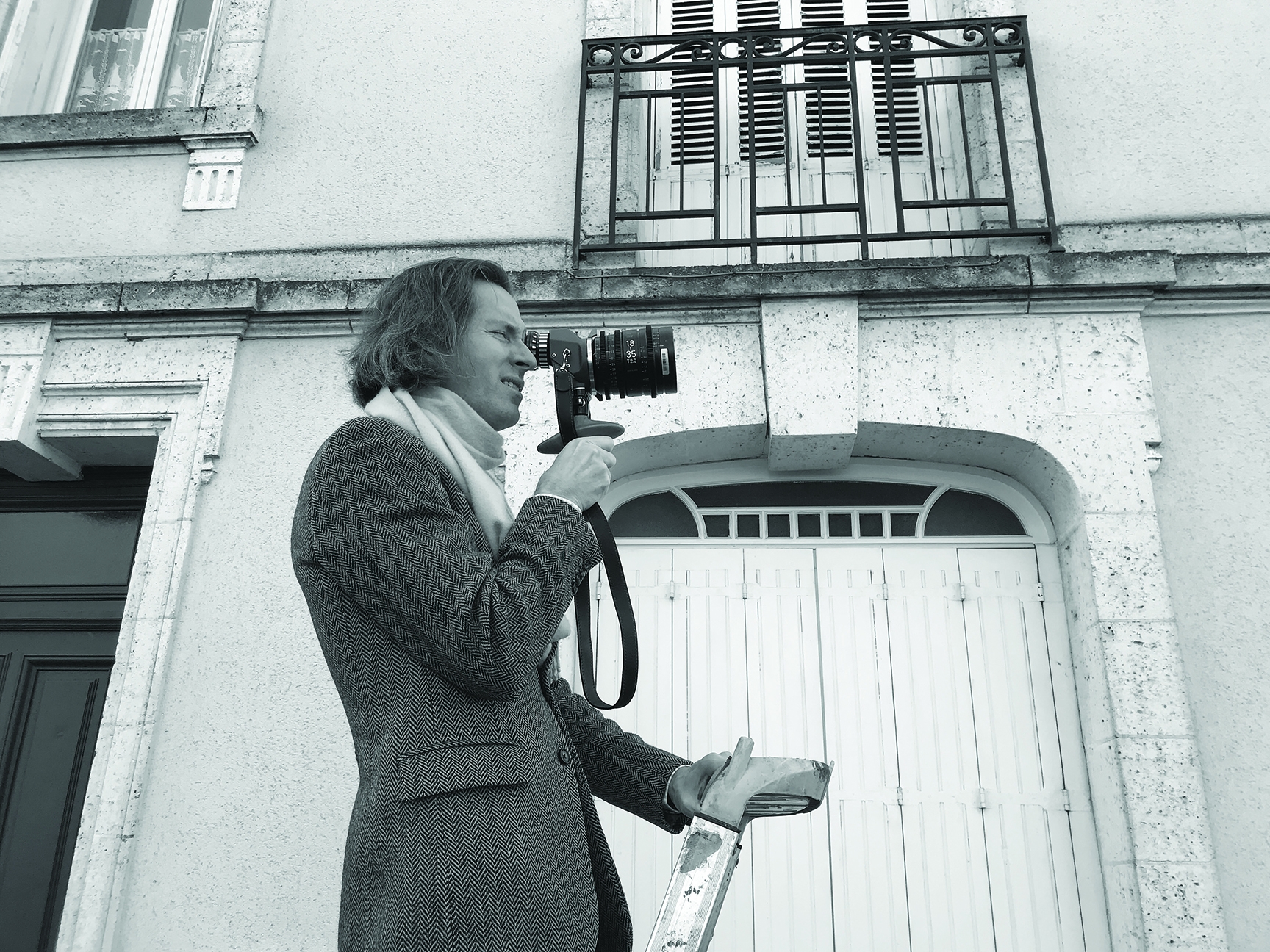
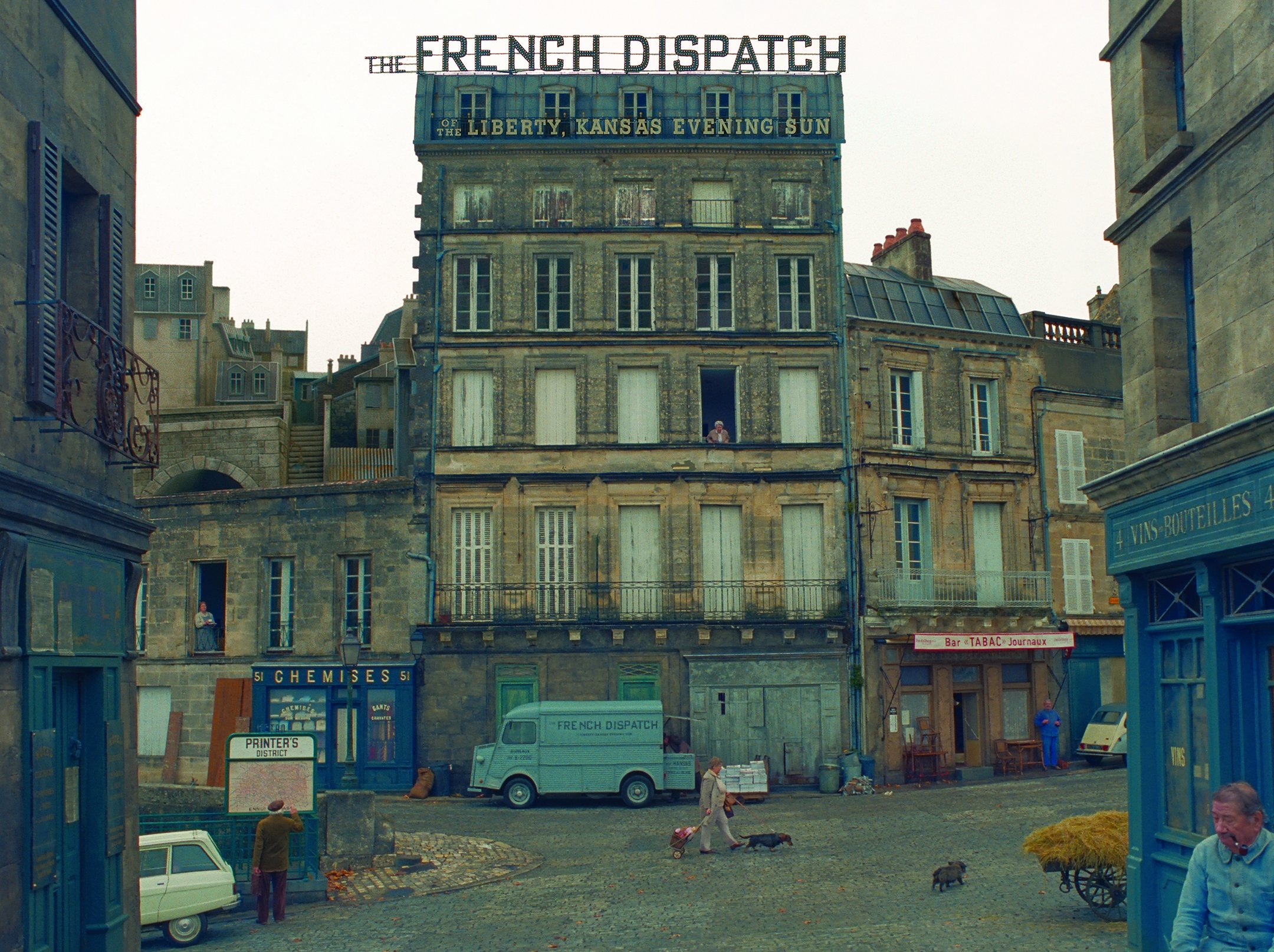
Although The French Dispatch takes inspiration from many notable films (including Henri-Georges Clouzot’s Diabolique and Louis Malle’s The Fire Within), its visual language will be familiar to Anderson’s fans. Vincent Scotet, who served as 1st AC on the project, says that upon entering a set, he immediately located the dead-center point in the room, “and if we were in doubt about where that was, we got out the measuring tape.”
Once the center was established, Yeoman and his crew went about executing Anderson’s animatics, which called for actions that often ran up against the physical limitations of actors and locations. “The challenge we have in a lot of the animatics is that the actors and camera move extremely fast in them,” says Yeoman. “In real life, that’s not easy to do, especially when the actors are going up stairs, for example. But [key grip and Steadicam operator] Sanjay [Sami] was a rugby player, so he’s pretty fast, and he’s adept at pushing the dolly very quickly and coming to a very quick stop.”
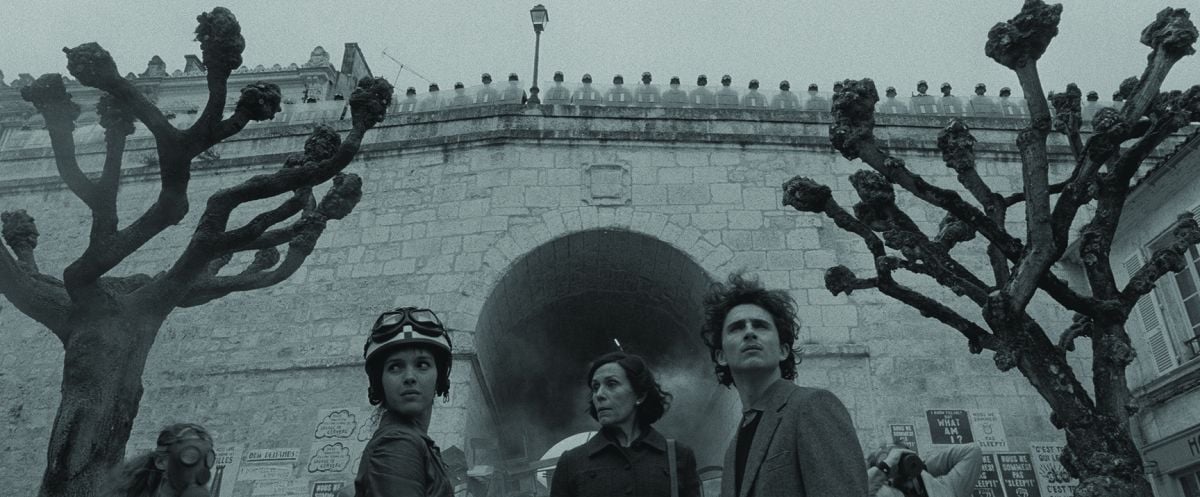
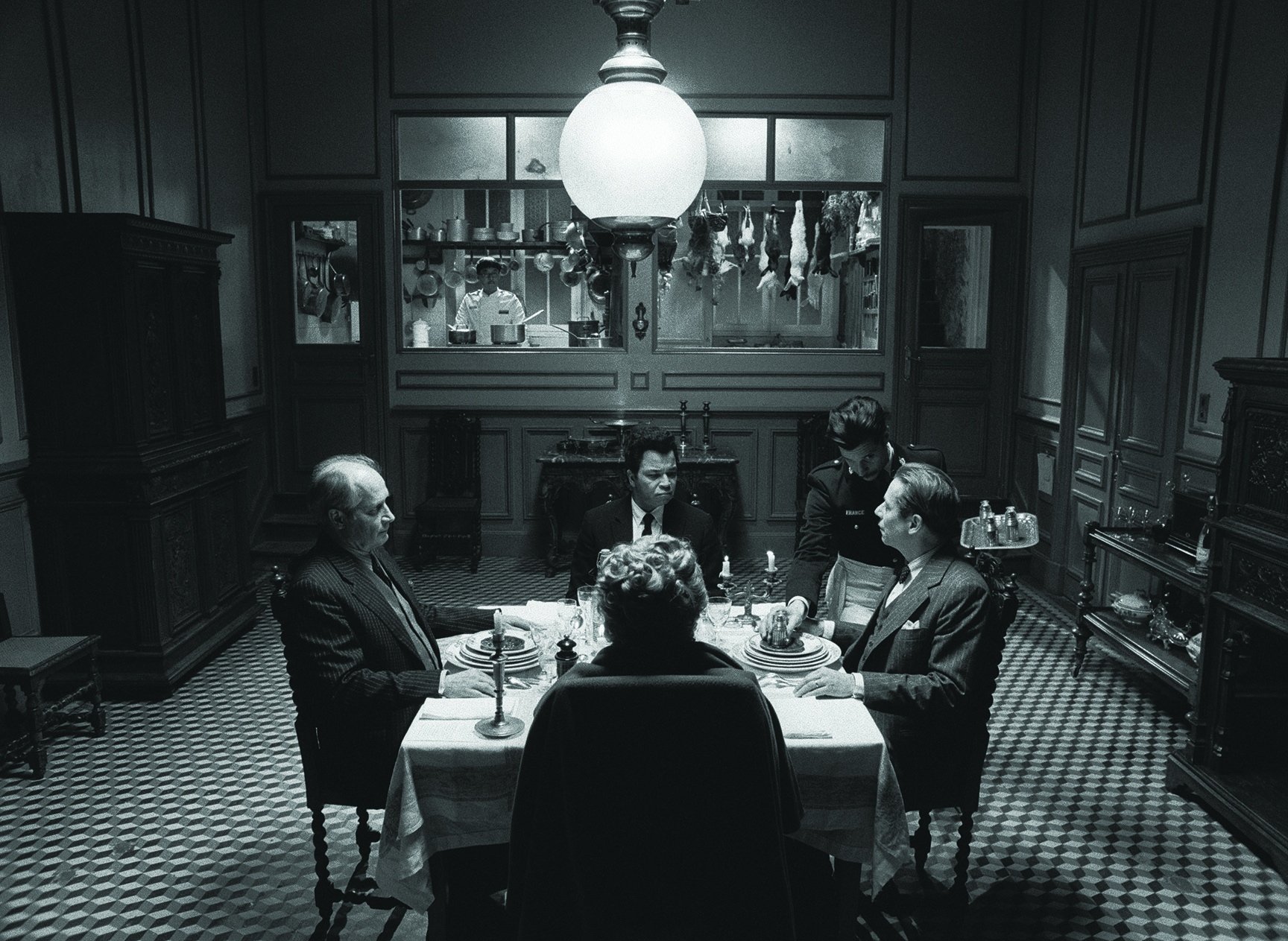
Sami, who has worked with Yeoman and Anderson since The Darjeeling Limited (2007), is often tasked with creating unusual rigs to realize Anderson’s ambitions, as the director has an aversion to many modern filmmaking tools. “Wes likes to do things old-school, so we all have to embrace the lack of some of the technical gear we might ordinarily use — like camera cars and Technocranes, for instance,” Yeoman says. “The last time we used a Technocrane was on The Royal Tenenbaums, for the big shot following Owen Wilson’s car accident. We rely on Sanjay to come up with more homemade approaches to doing things.”
Yeoman and his crew agree that, often, these “more analog” methods work out better, especially for complicated shots that involve combinations of whip-pans and dolly moves in which the camera must interact with the actors in a meticulously choreographed dance. “We have to be able to change direction on the track very quickly and be as precise as Wes wants to be down to the millimeter,” Sami says, “because if you’re off by a millimeter, [the frame] isn’t centered anymore when you hit your mark. You need to hit your mark and then move back 90 degrees on that axis. There are very hard stops and very fast pullbacks, and the 90-degree angle changes happen very quickly.”
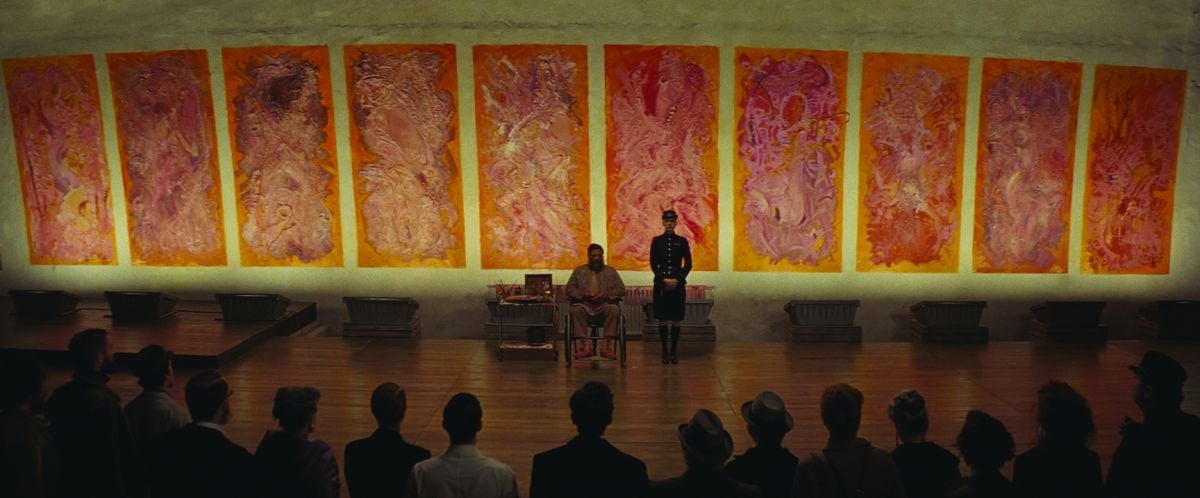
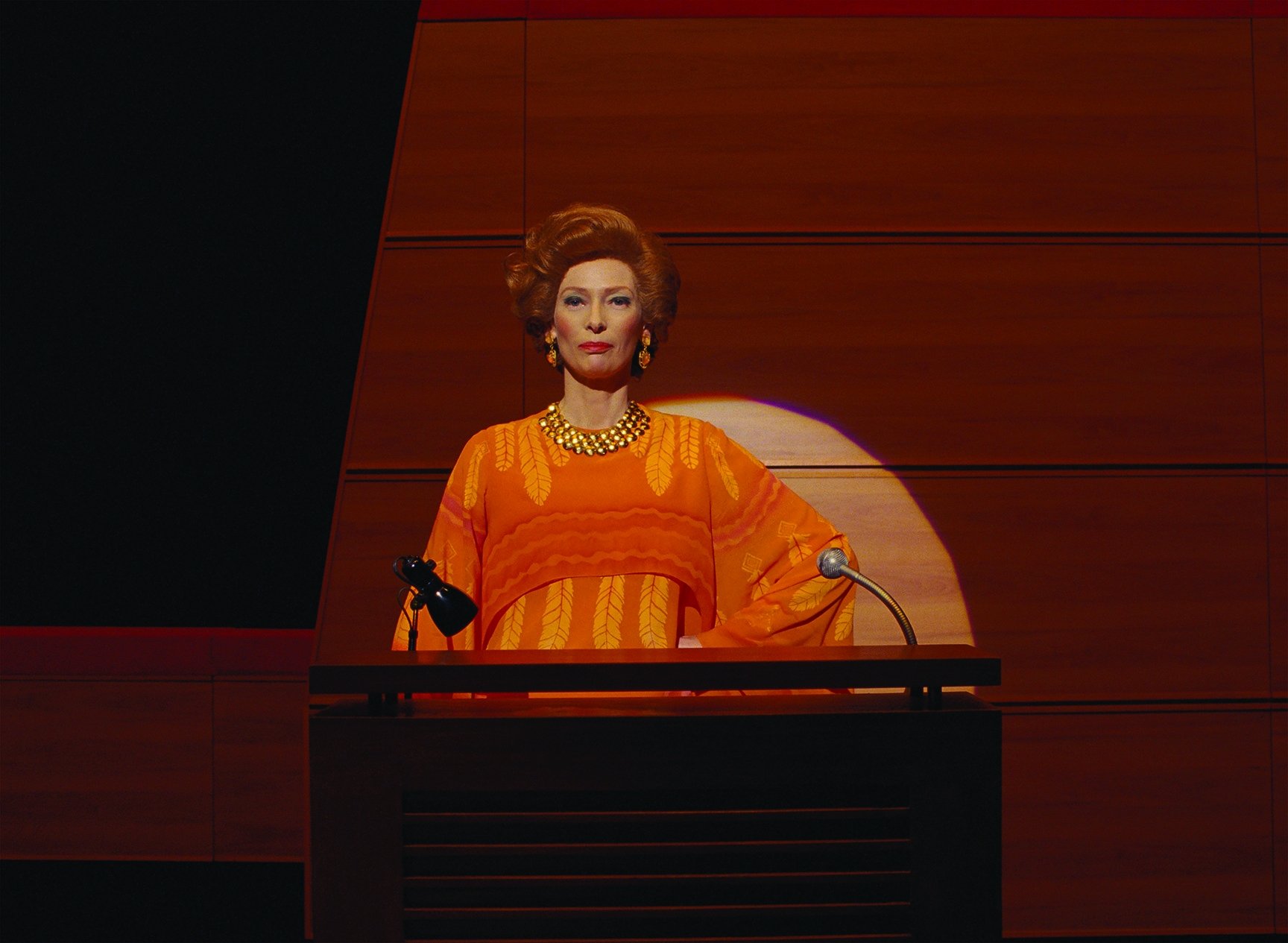
To help achieve those kinds of camera moves with the desired elegance, Sami designed a series of switch tracks in-spired by his children’s toy-train set. “The switch tracks allow us to very quickly change direction with the precision Wes wants,” he explains. “I love rising to the challenge of figuring out the physics of creating the shot that’s in Wes’ head.”
The other component to those tricky moves is Yeoman’s operating. “I usually use a geared head, but on those shots, I use a fluid head and twist myself into a pretzel,” the cinematographer explains. “I put my feet where the landing po-sition should be, so at the beginning of the shot I’m often very uncomfortable. Then, as I swing around, I come to a position where I feel I’m balanced, and that’s kind of how I do it. The more I have to do them, the more nervous I get, because if I blow a take with a group of great actors, I feel terrible about it.”
Sami notes that “it’s very, very rare that we do a take again because Bob missed it — and it’s not as simple as just twisting and untwisting, because there are often multiple swish-pans in the same shot. Plus, I’m tracking at the same time, and we’re doing really fast dolly moves with really hard stops again and again. It’s a 270-degree swish pan with four stops on the way while the dolly is moving!”
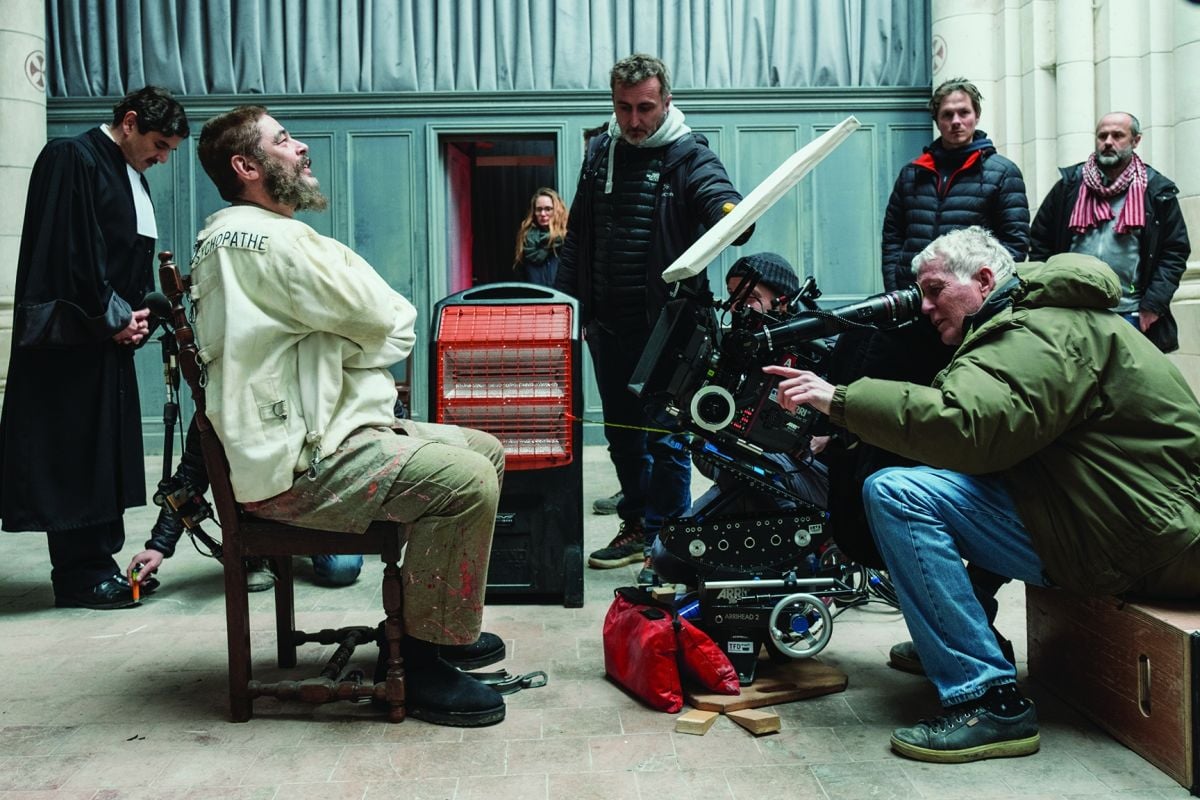
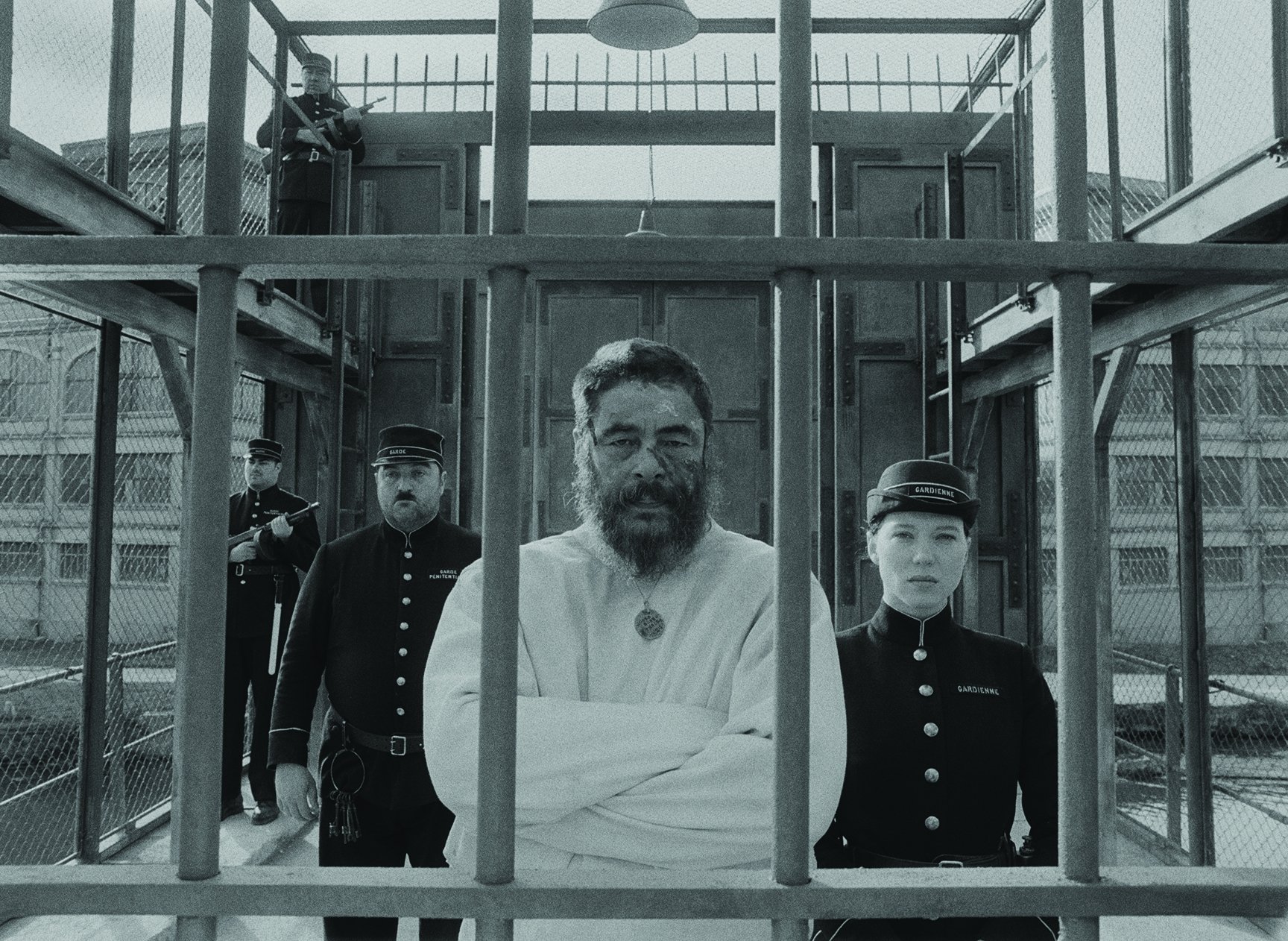
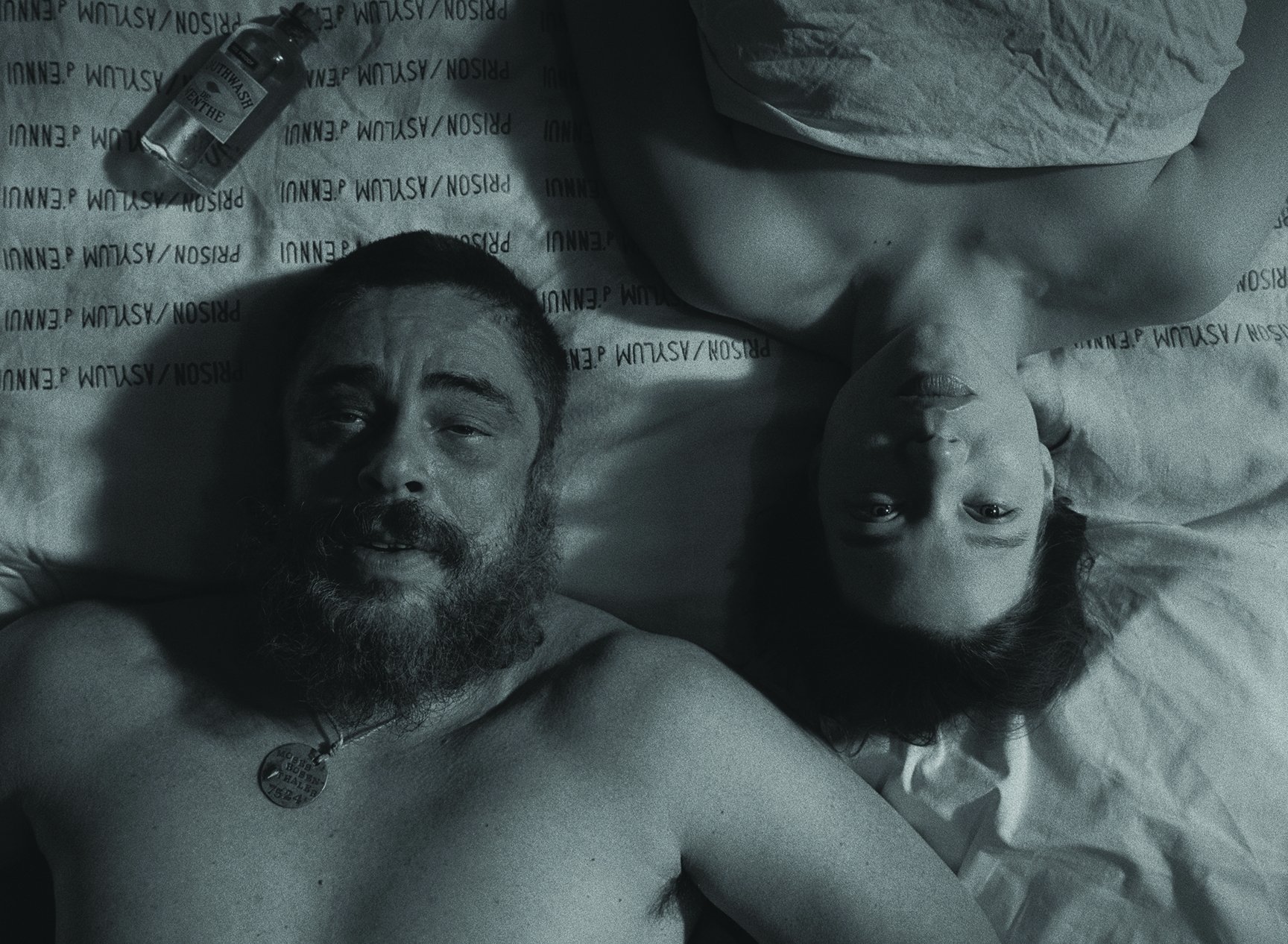
The deep focus that’s characteristic of Anderson’s frames placed similarly great demands on Scotet. “Today it’s very fashionable to shoot wide open and have very narrow depth of field, but we do the opposite,” says Yeoman. “Many times, Wes will have an actor very close to the camera and other actors in the background, and he’ll want everybody in focus. I’d say to Vincent, ‘Hey, what do I need to carry focus here?’ And he’d say, ‘You need a T8 to do that.’ So, we’d light to a T8.
“In this film, we had a long dolly shot with actors frozen in place, with some very close to camera and some very far,” Yeoman continues. “We shot that at T11, and it’s an interior. We brought in a lot of lights because we needed that depth of field to carry everybody in focus. Greg Fromentin, my gaffer, did an amazing job with that. We were shooting with a Cooke S4 25mm lens on an Arri ST at 200 ASA. To light the sequence, we needed six 18K HMIs and two 9K HMIs bounced into the ceiling, which was covered with white cloth. We put the lights behind the set walls.”
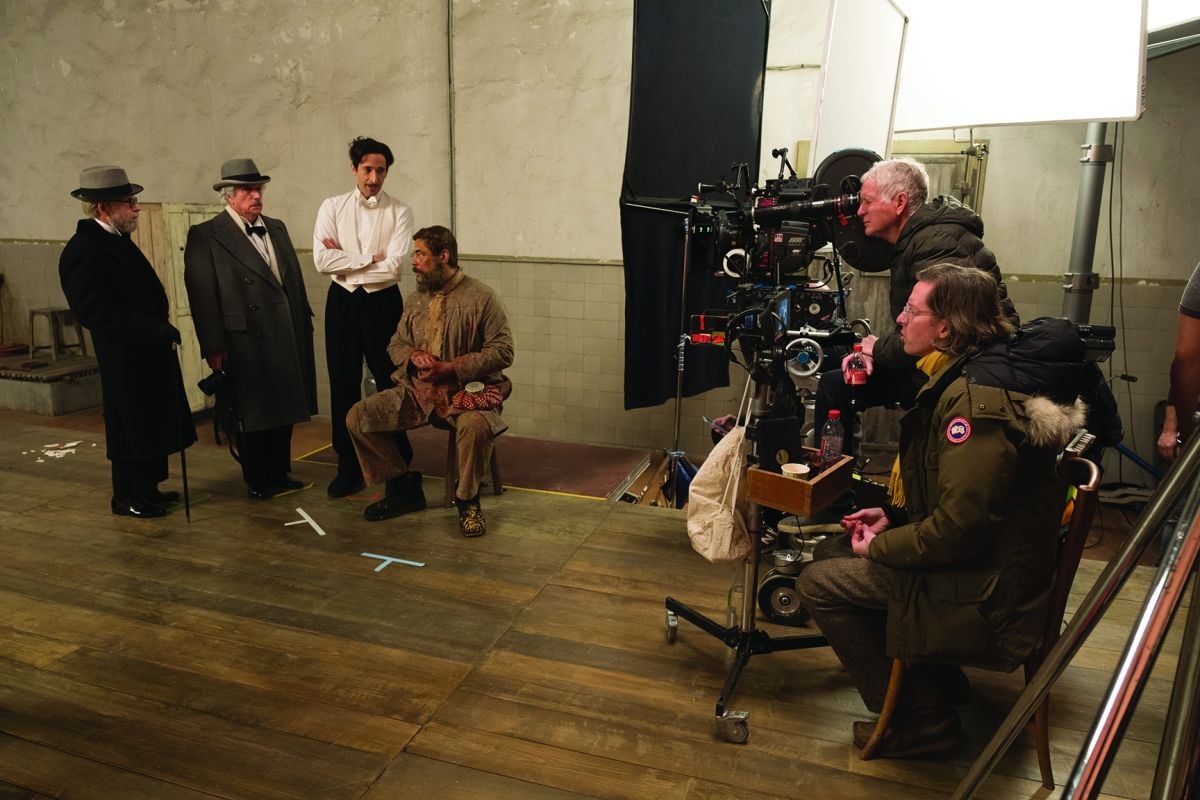
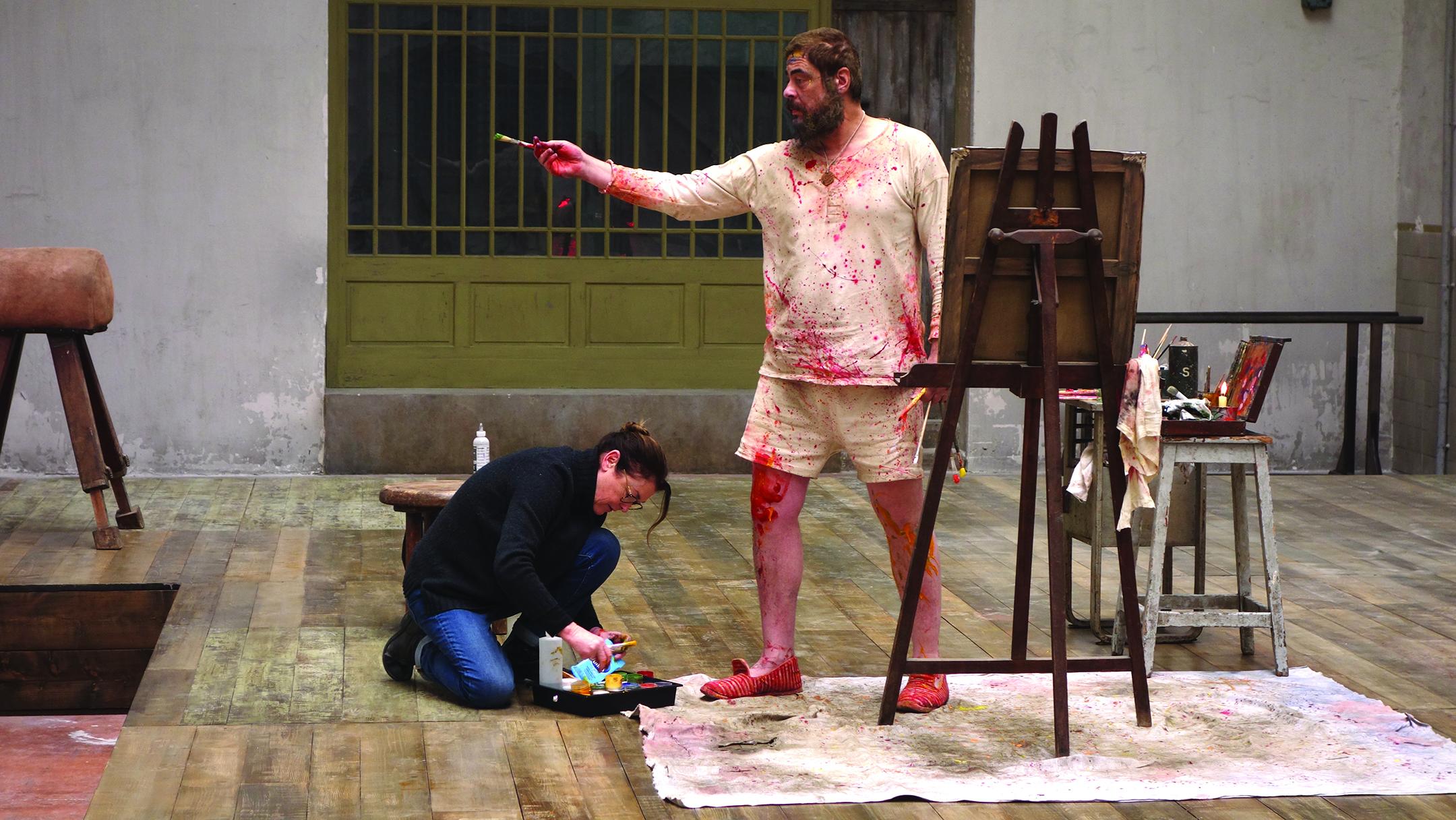
Adds Scotet, who was collaborating with Anderson and Yeoman for the first time, “I remember that day very well. We had an actor in the foreground who was 2 feet from the camera and one in the back who was 20 or 25 feet away. Working with Wes and Bob [involves] a different way of talking about focus and the choices you make in a shot. It’s often more about where I should set focus to play with the depth of field and carry as many actors as possible, instead of choosing one specific actor in the frame to be sharper than the others. Most of the time we’re using split focus, when the T-stop allows us to do so.”
Despite the rigorous technical requirements, Anderson’s sets tend to be very stripped-down. “We have the smallest on-set crew imaginable,” Yeoman says. “It’s a very different way of working. Wes does not like an army of people around. He doesn’t like video village or anything like it; he tries to create an intimate atmosphere for the actors.
“I generally don’t bring a lot of lights onto the set,” he continues. “For example, on The Grand Budapest Hotel [AC March ’14], our hotel location had a giant skylight, and we just bounced a lot of HMIs through that, used a lot of practicals inside, and brought in one light for the actors. That was pretty much how we did the interiors. Wes doesn’t want to see a lot of lights and light stands; he’d rather keep the space as clean as possible.”
The director also prefers keeping company moves to a minimum, favoring locations that are within a golf cart’s ride from the production’s hotel. “There are fewer logistical problems because everything is close by,” Sami says, “and everyone gets the flavor of the place they’re working in [by staying in the area.] That’s less likely to happen on a backlot.”
Anderson’s old-school approach extends to shooting on film, and Yeoman says he appreciates the discipline the more traditional medium brings to a set. “In general, I think everyone pays attention and focuses more when you’re shooting film,” he notes. “When you shoot digitally, often you turn the camera on and just keep rolling, and the hair-and-makeup people go in between takes. With film, when you slap the slate, everyone’s attention is really there. The disadvantage is that we shoot [Kodak Vision3 200T] 5213, which is [ISO] 200! We shot on that stock for all the color scenes, and we used Kodak 5222 [ISO 250] black-and-white stock for all the black-and-white material. When you shoot on [Arri] Alexa, of course, it’s [ISO] 800. So, we needed more light, particularly for nights and interiors, although we didn’t have to break our rule about ‘fewer lights and light stands’ that often on this picture — only occasionally. When I’m shooting film, I do go back to using my [light] meters much more than when I shoot digitally.”
But for Yeoman, the payoff is worth it. “There’s something magical about shooting film,” he says. “With digital, you can see on the monitor pretty much exactly what you’re going to get. With film, there’s a magic that happens from the moment we load the film to when it goes to the lab and someone else prints it. I certainly have a pretty good idea of what it’s going to look like, but there are often surprises — and generally good ones.”
Sami concurs, recalling that on Moonrise Kingdom [AC June ’12], which Yeoman shot on Super 16mm, “the dailies often surprised us. A lot of the takes that we presumed were going to be way too dark were actually really good.”
Yeoman adds, “Don’t get me wrong, I love what we can do with the Alexa and other digital cameras. At the same time, I think a lot of the magic of filmmaking has been lost since we entered the digital world, and that magical quality appeals to me. The magic of cinema is very important to me.”
TECH SPECS
1.37:1, 2.39:1
Format: 4-perf Super 35mm
Cameras: Arricam ST, Arricam LT, Arriflex 235
Lenses: Cooke S4, Anamorphic /i; Arri/Zeiss Master Anamorphic
Film Stocks: Kodak Vision3 200T 5213 (color), Eastman Double-X 5222 (black-and-white)
